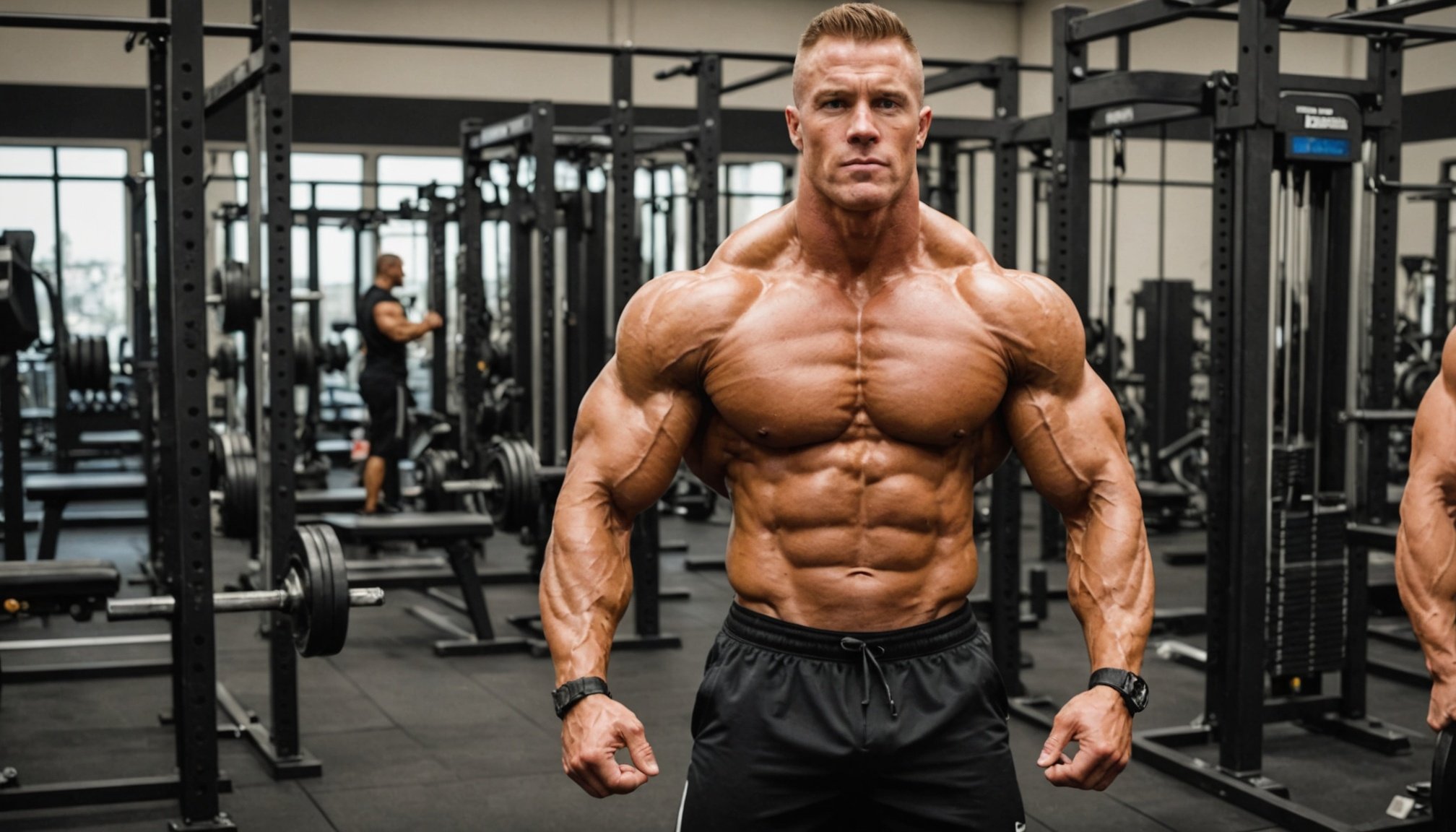The world of bodybuilding is a field filled with discipline, dedication, and strategic planning. One of the crucial aspects of bodybuilding is cutting – the process of shedding body fat while retaining muscle mass to achieve a defined and chiseled physique. This process involves a meticulous blend of specific training routines, dietary control, and sometimes, adjustments in water intake. But the question that often arises among bodybuilding aficionados is: how long should a bodybuilder cut fat before a competition? This article aims to shed light on this topic.
The Concept of Cutting
Bodybuilders usually cycle between the phases of "bulking" and "cutting." The bulking phase is where bodybuilders aim to build as much muscle as possible, often allowing for a higher intake of calories. In contrast, the cutting phase involves lowering calorie intake and increasing cardio to burn fat and reveal the muscle definition underneath.
Also read : What are the latest trends in muscle building and strength training?
The duration of the cutting phase varies among individuals. Factors such as your body fat level at the beginning of the cutting phase, your metabolic rate, the diet you follow, and the intensity of your workout regimen all play a role in determining how long you should cut before a competition.
Strategizing Your Cut
Strategizing the cutting phase is essential to ensure that you lose fat effectively without compromising your muscle mass. This process can be broken down into three categories: diet, training, and rest.
Also read : What role does core strength play in overall muscle stabilization?
Diet
Your diet during the cutting phase will significantly influence your fat loss. Simultaneously, it will also determine how much muscle you retain. During cutting, your calorie intake should be less than the calories you burn in a day. It’s recommended to start by reducing your daily calorie intake by around 500 calories.
Furthermore, maintaining a high protein diet is key during the cutting phase. Protein is essential for muscle repair and growth, and can prevent muscle loss during a calorie deficit. You should aim to consume at least 1 gram of protein per pound of body weight each day.
Training
While diet plays a crucial role in cutting, training cannot be overlooked. You should continue with your weight training routine, aiming to lift heavy even during a calorie deficit. This will signal your body to retain muscle mass.
Cardio is another vital element in your training routine. While high-intensity interval training (HIIT) is effective, it can be taxing on the body. Therefore, a blend of HIIT and low-intensity steady-state (LISS) cardio throughout the week can be beneficial.
Rest
Rest is an often overlooked but important part of the cutting process. Adequate rest ensures your body recovers well, thereby preventing muscle loss.
Timing Your Cut
The duration of your cutting phase will largely depend on your body fat percentage at the start.
If you are at a high body fat percentage (above 15%), you should begin the cutting phase 16-20 weeks before the competition. This will allow for a gradual and steady fat loss of 1-2 pounds per week, which is considered healthy and sustainable.
If you have a moderate body fat percentage (around 10-15%), starting your cut 12-16 weeks before the competition should suffice.
For those with a low body fat percentage (below 10%), an 8-12 week cutting phase could be enough. Remember, the goal of the cutting phase is not just fat loss, but also preserving muscle mass.
Cutting Water Weight
An additional strategy some bodybuilders use in the final days leading up to the competition is cutting water weight. This is a short-term tactic to make muscles appear more defined. It involves reducing water intake and increasing water excretion through the use of diuretics or sweating. However, this method should be approached with extreme caution, as it can lead to dehydration and serious health concerns.
The journey of a bodybuilder involves hard work, patience, and precision. Cutting not only tests your commitment to your diet and training but also your mastery over your body. It is a phase where you chisel out the masterpiece that has been created during the bulking phase. The key to a successful cut lies in understanding your body and being responsive to its needs. Remember, each body is unique, so what works for one person may not work for another. The advice given here is a guideline, but you must listen to your body and adjust accordingly.
The Peak Week
The final week before a bodybuilding competition, often referred to as the peak week, requires a unique approach. The aim during this week is to achieve maximum muscle definition, while ensuring that you retain the fullness and size of the muscles.
Nutrition
During peak week, bodybuilders adjust their protein, carbs, and fat intake according to a specific plan. Protein intake tends to remain high, as the body requires it to preserve muscle mass during the final phase of cutting. The levels of carbohydrate intake, however, will fluctuate. Some bodybuilders adopt the practice of carbohydrate loading, which involves increasing carbohydrate intake in the days leading up to the competition. This technique can help to fill out the muscles and provide a fuller appearance.
However, carbohydrate manipulation should be done carefully and it is recommended to trial different approaches during off-season to understand what works best for your body.
Exercise
In terms of exercise, traditional weight lifting is often replaced or complemented by pump workouts, which are high-repetition exercises designed to pump blood into the muscles, thus increasing their size temporarily. Heavy weightlifting is typically reduced to prevent injury and promote recovery. Cardio is also reduced or eliminated entirely to avoid unnecessary calorie expenditure and potential muscle loss.
Conclusion
In conclusion, the bodybuilding cut is a meticulous process that requires a deep understanding of one’s body and a strategic approach to diet and exercise. The duration of a purposeful fat loss stage generally ranges from 8 to 20 weeks depending on your initial body fat percentage. The key to successful cutting lies in achieving a balance between preserving muscle mass and encouraging fat burning through a calorie deficit.
Maintaining a high protein diet, incorporating both weight training and cardio in your exercise routines, and ensuring adequate rest are all critical to effective cutting. Additionally, manipulation of water, sodium and carbohydrate intake can be utilized, particularly in the peak week, to enhance muscle definition.
However, remember that each bodybuilder’s journey is unique, and the exact strategies and timelines that work for one person might not work for another. Hence, it’s essential to listen to your body and adjust your approach based on its response.
The process of cutting for a bodybuilding competition truly tests a person’s discipline, dedication, and commitment to their craft. It is indeed a challenging phase, but with careful planning and execution, the final result – a chiseled, well-defined physique – is undeniably rewarding.











